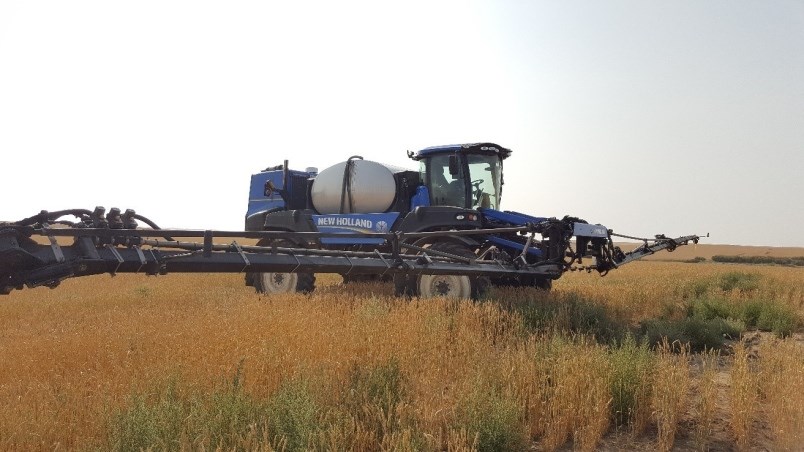Warm weather continued to help crops mature throughout the province. This was beneficial for many areas, but some reported premature ripening and damage from high heat.
Producers in the province have one per cent of the crop combined and two per cent swathed or ready to straight-cut. The five-year average (2015-2019) for this time of year is two per cent combined and three per cent swathed or ready to straight-cut.
Fifty-two per cent of fall rye, 19 per cent of winter wheat, six per cent of field peas and three per cent of lentils are now in the bin. Harvest is most advanced in the south and west-central regions, where two per cent of the crop in the southwest is combined and one per cent of the crop in the southeast and west-central is combined. Producers in the central and northern regions have less than one per cent of the crop combined, but many expect to start in the coming weeks.
Much of the province received small amounts of rain this week, with parts of the northern, west-central and southeast regions receiving half an inch to an inch. The Broadview area received the most rain this week with 39 mm. The St. Walburg area has received the most rain in the province since April 1 with 433 mm. More rain is needed to help crops during the seed-filling stage. Moisture conditions were slightly reduced this past week.
Cropland topsoil moisture is rated as 51 per cent adequate, 37 per cent short and 12 per cent very short. Hay and pasture land topsoil moisture is rated as 38 per cent adequate, 41 per cent short and 21 per cent very short. Many producers reported that hay yields are below average this year.
Estimated average dryland hay yields for the province are 1.2 tons per acre for alfalfa, 1.1 tons per acre for alfalfa/bromegrass, 1.0 tons per acre for other tame hay, 1.0 tons per acre for wild hay and 1.8 tons per acre for greenfeed. Estimated average irrigated hay yields are 3.0 tons per acre for alfalfa, 2.7 tons per acre for alfalfa/bromegrass and 2.8 tons per acre for greenfeed.
The majority of crop damage this week was due to wind, dry conditions, heat, wildlife and grasshoppers. There were also isolated reports of hail.
Farmers are busy wrapping up haying and baling, getting ready for harvest, desiccating and swathing crops and starting to combine in some areas.
East-Central Saskatchewan:
Crop District 5 – Melville, Yorkton, Cupar, Kamsack, Foam Lake, Preeceville and Kelvington areas
Crop District 6A – Lumsden, Craik, Watrous and Clavet areas
Crops continue to rapidly dry down in the region, with some farmers beginning harvest operations. Less than one per cent of the crop has been combined at this time and two per cent has been swathed or is ready to straight-cut. Farmers have reported that the heat and dry conditions have resulted in some crops ripening prematurely and not filling properly. Thirty-three per cent of the fall rye, 10 per cent of the winter wheat, four per cent of the field peas and two per cent of the lentils are now in the bin. There were scattered rain showers in the east-central region this week. Areas north of Raymore received the highest amount of rain in the region this week with 20 mm. The Kelliher area received 16 mm, the Foam Lake area 10 mm, the Lipton and Rama areas eight mm and the Earl Grey, Kenaston and Meacham areas seven mm. Topsoil moisture conditions have continued to deteriorate in the region. Cropland topsoil moisture is rated as 36 per cent adequate, 45 per cent short and 19 per cent very short. Hay and pasture land topsoil moisture is rated as 22 per cent adequate, 51 per cent short and 27 per cent very short. The majority of crop damage this week was due to wind, dry conditions and heat. Haying is wrapping up in the region and yields are lower than normal. The warm, dry weather conditions have also limited pasture growth in the region. Farmers are busy wrapping up haying and baling, getting equipment ready for harvest and starting to desiccate pulse crops. Estimated East-central Hay Yield (tons/acre) Dry land Irrigated Land Alfalfa 0.9 N/A Brome/Alfalfa 0.9 N/A Other Tame Hay 0.7 N/A Wild Hay 0.8 N/A Greenfeed 1.7 N/A
A complete, printable version of the Crop Report is available online at www.saskatchewan.ca/crop-report



